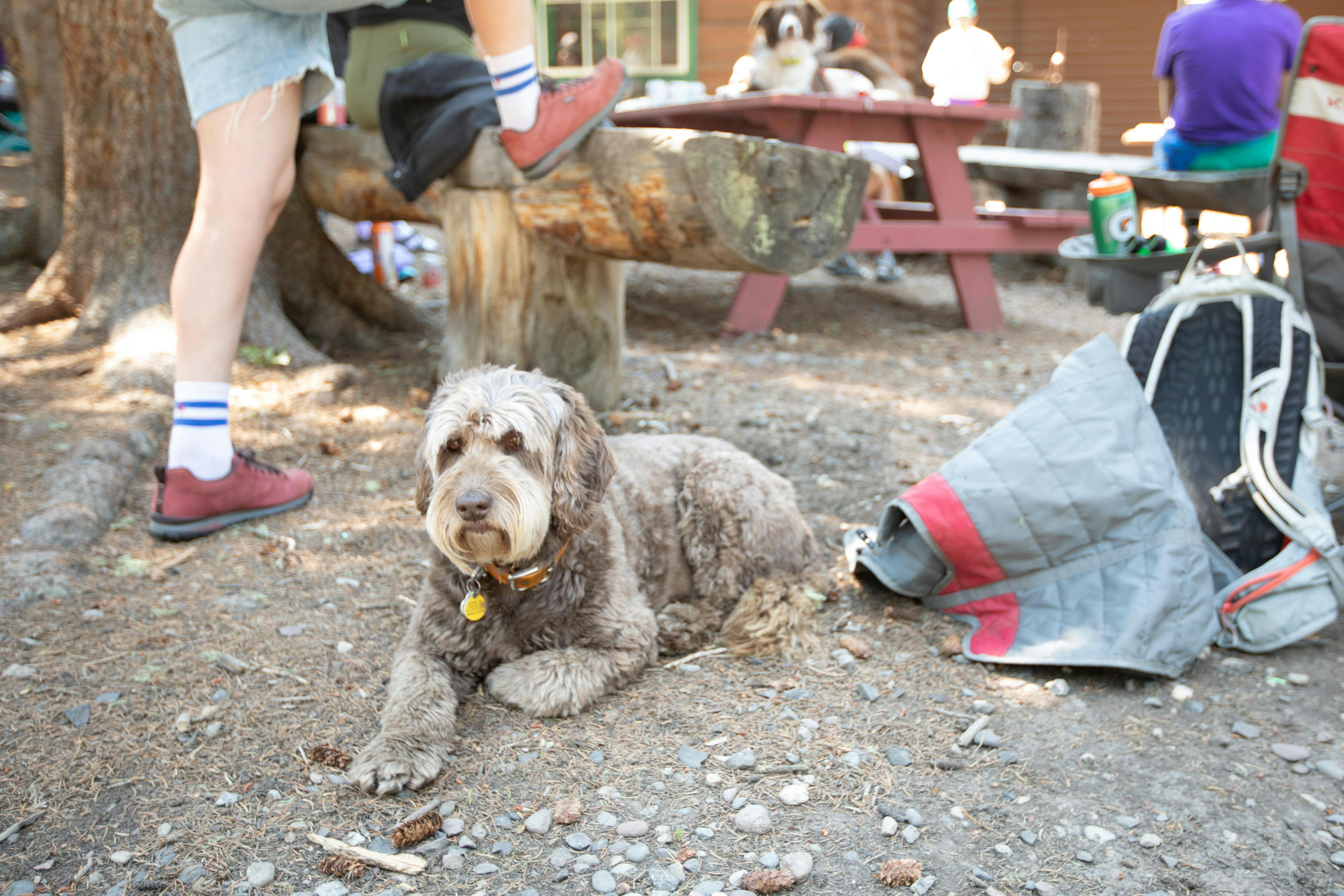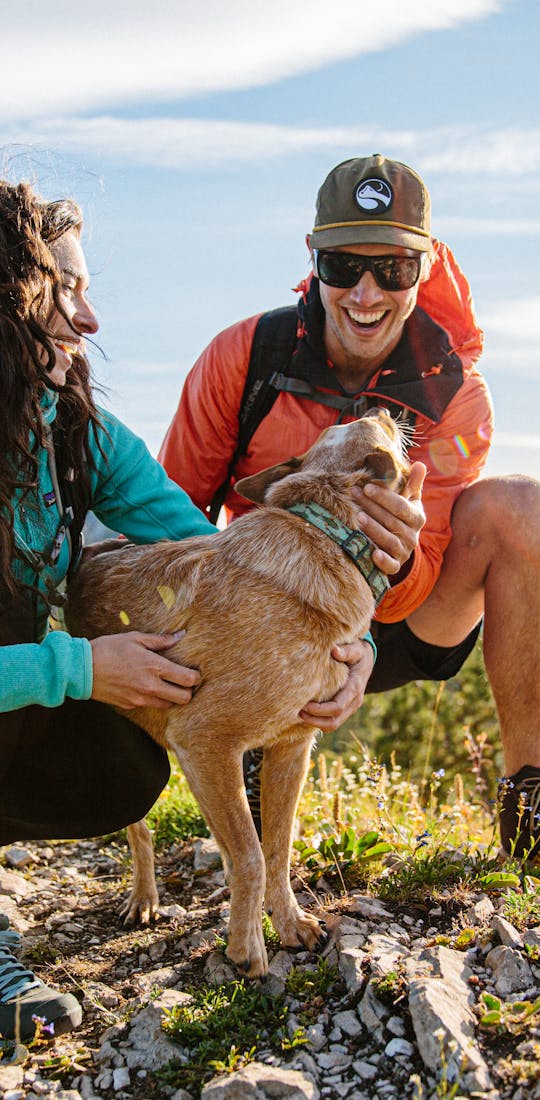It's safe to say that hiking is sure to be right up your alley if you love exploring the outdoors and crave a good adventure.
With the fresh air, an abundance of greenery, and unique wildlife to find, a hiking trip can be quite relaxing. And the trip can become even better when your canine companion tags along, no matter their breed or size!
Now, advanced hiking trails can be quite a challenge to maneuver, especially when you have your dog with you.
So let's go through the checklist! You have the required resources, research, necessities, and supplies, but there's still something missing.
Obedience training!
Ensuring that your dog knows and can effectively respond to commands along your trip is important and can keep them out of some pretty nasty situations.
However, most stand to wonder what the most important commands to teach your dog before hiking is.
So, if you're an avid hiker who wants to bring your dog along, here are the five commands your dog should know before embarking on the journey.

5 Important Dog Commands for Hiking
Lucky for you, your dog doesn’t need to know anything too advanced to make it through your hiking excursion.
After all, there probably won’t be a time when advanced commands such as “Heel” or “Find it” will be needed.
Therefore, you only need to ensure they know the basics to help keep them under control.
- Sit
If you've ever had a restless dog who doesn't know when to stop moving, you'll know how essential the sit command is.
"Sit" is the most basic of commands and serves as the framework for your dog to learn more advanced ones. That's why in most cases, this is the first command taught.
Dogs who learn the sit command are calmer and easier to control than those who haven't learned it, which are both important factors you'll need on a hiking trip
The steps to teaching this command are:
- Get a treat and hold it in front of your dog
- Move this hand upwards. As your dog's head follows the treat up, his bottom should lower down like a lever
- When his butt is on the ground, say "Sit" and reward him with the treat and praise
These steps need to be repeated daily until they become muscle memory. Soon you'll have him sitting even without a treat present.
- Stay
Once the sit command is mastered, the next command to follow is usually the stay command.
The “Stay” command will 100% come in handy when you need to move around but need your dog to stay in one place.
It is another command that will make it easier to prevent your dog from getting too out of control while out on the trail.
Note: Your dog will not be able to learn the stay command unless they’ve learned the sit command.
- You’ll begin by putting your dog into a “Sit”
- Next, open your palm out in front of your dog and say, “Stay”
- Slowly take 2-4 steps back. If he stays and doesn’t move, reward him
- With time, gradually increase the number of steps you move away from him before giving him his treat
Don’t get frustrated if this command takes time to master.
After all, this exercise of self-control is a concept that most animals take some time to adjust to since it’s much more fun to move around than stay still.

- Come
Another important command you'll want to know is the "Come" command.
This command comes in handy in any situation that requires you to recall your pup back to you, such as mistakenly losing grip of your dog's leash or harness.
- Put your dog on his leash or harness
- Bend down until you're at his level and say "Come" while gently pulling the leash towards you
- When he finally reaches you, reward him with treats and affection
To plan for any instances where your dog may get off his leash or harness, practicing this command with your dog without a leash once he's mastered it is important.
Just make sure you keep him in a safe, enclosed space before trying!
- Leave It
Your dog is bound to want to curiously pick up any and every new thing or creature that crosses his path while hiking, which can lead him into quite the pickle.
Therefore, it will be important to have a command to prevent him from doing this.
This is where the "Leave It" command comes into play.
This command will teach your dog that if he ignores his curiosity, there's a much better reward to be had.
This command has some layers, so it may take a while for your dog to master it, but you'll get there eventually!
- Put one treat in both of your hands
- Put one of your closed fists in front of him and say, "Leave It"
- No matter how much his licks, paws, or barks at your hand to get the treat out, ignore it
- Once he calms down and stops his attempts, give him the treats in your other hand
- Repeat this until your dog moves away from the first fist when the "Leave It" command is given
- Once he's mastered this, upgrade to only rewarding him when he looks up at you while moving away from your fist
Once your dog masters moving away from your fist while maintaining eye contact, up the ante.
You'll need two treats for this: one that's not very appealing and one that your dog absolutely loves.
- Start off by saying "Leave It" and put the less appealing treat on the floor with your hand over it
- Play the waiting game again until your dog ignores the treat and maintains eye contact with you
- Remove this treat off the ground and give him the appealing one
- Once he masters this, place the less appealing treat on the floor but don't completely cover it this time. Just let your hand hover over it
- You want to gradually increase the space between your hand and the treat below it until you can have your hand 6 inches above the treat without your dog getting it
- Once he's mastered this, move on to trying it while you're standing, and cover the treat with your foot. Repeat the steps above but use your foot instead!
This is a lengthy process, so it's best not to rush it and allow your dog to take his time.
- Quiet
One important behavior to work on if your dog has a problem with it is excessive barking.
Your dog’s barking can greatly disturb the animals around him. An important rule to hiking is to leave the surrounding wildlife undisturbed, so dogs barking isn’t a good thing.
Therefore, teaching your dog a “Quiet” command can be handy.
- If your dog starts barking, secretly get a treat and hide it in your hand
- Now firmly yet calmly say, “Quiet”
- When the barking stops, reward him with positive reinforcement
This will need to be repeated daily for your dog to get it. However, this can help control this bad barking behavior while on your trail.
Summary
Hiking can be an amazing trip to take with your dog.
However, ensuring your dog knows five of the most important commands for the journey is essential to ensure you can keep him under control.
Five commands that your dog should know before the trip include:
- Sit: The most basic of commands to help calm your pup and keep them under control
- Stay: Helps prevent your dog from moving around when you don’t want them to
- Come: A basic recall command can be beneficial if your dog gets off their leash or harness
- Leave It: A go-to to prevent your dog from picking up or chasing any potentially dangerous items, plants, or animals in the area
- Quiet: This will prevent your dog from excessively barking and disturbing the surrounding wildlife
Now that you know five commands to keep your dog in check while on your journey, get out there and get hiking!
